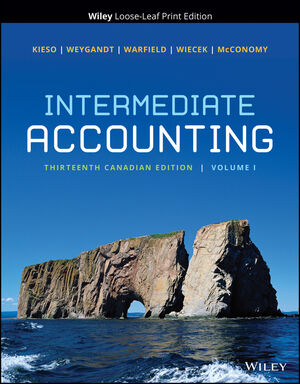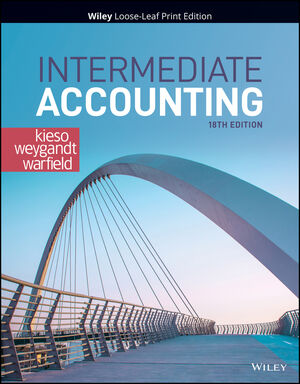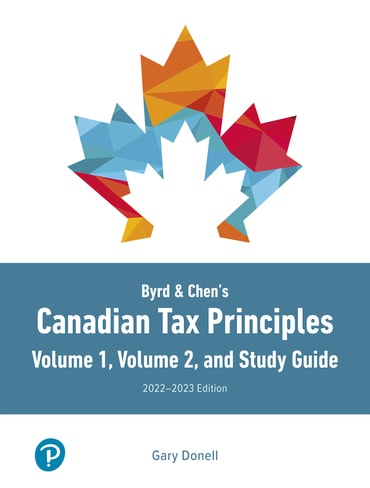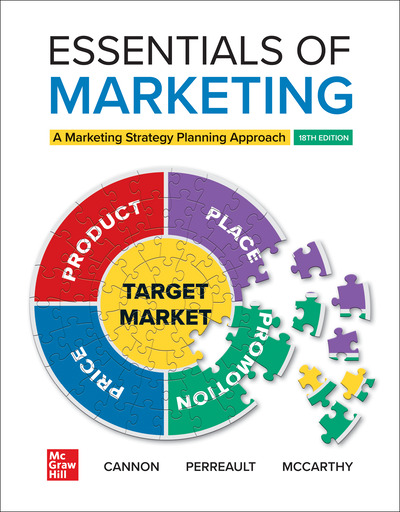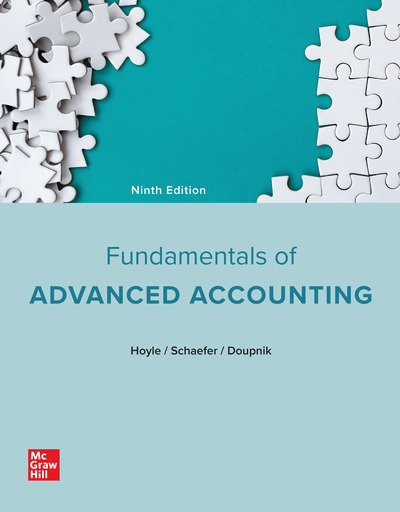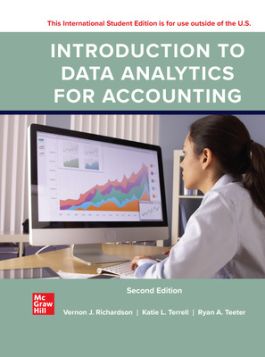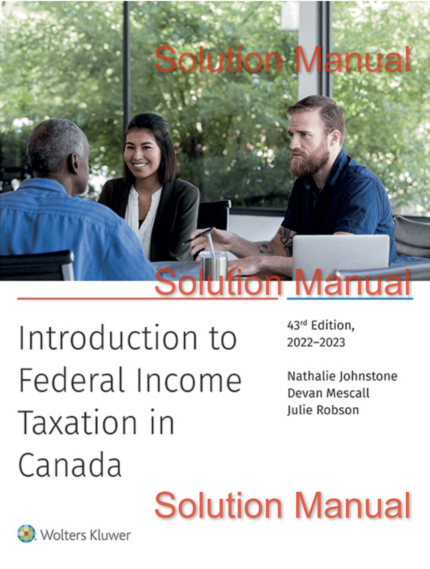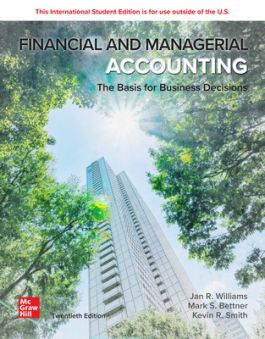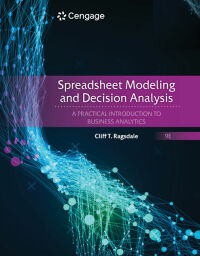Intermediate Accounting, Volume 1, 13th Canadian Edition – Solution Manual
Do you need test banks fast? eTestBank.net is the best test bank website for you! Download your test bank right after you pay. No waiting!
Why eTestBank.net is Great:
✅ Instant Download:
Get your test bank right away after payment.
✅ Unlimited Downloads:
Download your test bank anytime and as many times as you want.
✅ 24/7 Live Help:
We are here to help you all day, every day.
✅ Guaranteed Delivery:
If you don’t get the download right away, we will send it to you in 3 to 6 hours.
How to Get Your Test Bank:
- Pick Your Test Bank: Choose from many test banks.
- Pay Safely: Pay securely on eTestBank.net.
- Download Instantly: Get your test bank immediately after payment.
- Download Anytime: Unlimited downloads whenever you need them.
Need Help? Contact Us:
📧 Email: [Support@etestbank.net]
📱 WhatsApp: [https://wa.me/message/MC222DLQ4GDXL1r]
Didn’t Get Your Download?
Don’t worry! If you don’t get the file right away, we’ll send it to you in 3 to 6 hours. Need it sooner? Contact us by email or WhatsApp.
💡 Buy now from eTestBank.net for instant downloads, unlimited access, and 24/7 support—get your test bank today!
Table of contents for Intermediate Accounting Solution Manual
Preface vi
1 The Canadian Financial Reporting Environment 1-1
- Capitalizing on Financial Reporting 1-1
- Preview of Chapter 1 1-3
- 1.1 Financial Statements and Financial Reporting 1-3
- Accounting and Capital Allocation 1-4
- Stakeholders 1-5
- Objective of Financial Reporting 1-6
- Information Asymmetry 1-9
- 1.2 Standard Setting 1-11
- Need for Standards 1-11
- Parties Involved in Standard Setting 1-12
- 1.3 Generally Accepted Accounting Principles 1-17
- GAAP Hierarchy 1-17
- Professional Judgement 1-18
- 1.4 Challenges and Opportunities for the Accounting Profession 1-18
- Impact of Technology 1-20
- Sustainability Reporting 1-21
- Oversight in the Capital Marketplace 1-23
- Centrality of Ethics 1-24
- Standard Setting in a Political Environment 1-25
- Principles versus Rules 1-26
- Conclusion 1-26
2 Conceptual Framework Underlying Financial Reporting 2-1
- Measuring the Unconventional 2-1
- Preview of Chapter 2 2-3
- 2.1 Conceptual Framework 2-3
- Rationale for a Conceptual Framework 2-3
- Development of the Conceptual Framework 2-4
- Information Asymmetry Revisited 2-5
- Objective of Financial Reporting 2-5
- 2.2 Qualitative Characteristics of Useful Information 2-6
- Fundamental Qualitative Characteristics 2-6
- Enhancing Qualitative Characteristics 2-13
- Trade-offs 2-14
- 2.3 Elements of Financial Statements 2-14
- Assets 2-15
- Liabilities 2-16
- Equity 2-17
- Revenues/Income 2-18
- Expenses 2-18
- Gains/Losses 2-18
- 2.4 Foundational Principles 2-19
- Recognition/Derecognition 2-20
- Measurement 2-25
- Presentation and Disclosure 2-32
- 2.5 Financial Reporting Issues 2-34
- Principles-Based Approach 2-35
- Financial Engineering 2-35
- Fraudulent Financial Reporting 2-36
- 2.6 IFRS/ASPE Comparison 2-37
- Looking Ahead 2-37
3 Data, Decisions, and Measurement 3-1
- How CEO Travel Patterns Can Be Used to Predict Mergers and Acquisitions 3-1
- Preview of Chapter 3 3-3
- 3.1 Data and Decisions 3-3
- Data, Digitization, and Digitalization 3-3
- Decision-Making in Financial Reporting 3-5
- 3.2 Measuring Financial Statement Elements 3-10
- Valuation Techniques 3-10
- Value in Use Measurements 3-15
- Disclosures Relating to Measurement 3-16
- 3.3 Measuring Fair Value Using IFRS 13 3-17
- 3.4 Present Value Concepts 3-20
- The Nature of Interest 3-20
- Fundamental Variables in Present Value Calculations 3-21
- Different Ways to Perform the Calculations 3-23
- Some Additional Calculations 3-31
- 3.5 IFRS/ASPE Comparison 3-33
- A Comparison of IFRS and ASPE 3-34
- 4 Reporting Financial Performance 4-1
- Making Money out of Thin Air 4-1
- Preview of Chapter 4 4-3
- 4.1 Performance 4-3
- Business Models and Industries 4-3
- Communicating Information about Performance 4-7
- 4.2 Quality of Earnings/Information 4-8
- 4.3 Measurement of Income 4-14
- 4.4 Discontinued Operations 4-16
- Component of an Enterprise 4-16
- Assets Held for Sale 4-17
- Measurement and Presentation 4-18
- 4.5 The Statement of Income and the Statement of Comprehensive Income 4-20
- Presentation 4-20
- 4.6 The Statement of Retained Earnings and the Statement of Changes in Equity 4-30
- Presentation of the Statement of Retained Earnings 4-31
- Presentation of the Statement of Changes in Equity 4-32
- 4.7 Disclosure and Analytics 4-34
- Disclosure 4-34
- Analytics 4-34
- Non-GAAP Measures 4-35
- Other Key Measures 4-35
- 4.8 IFRS/ASPE Comparison 4-36
- A Comparison of IFRS and ASPE 4-36
- Looking Ahead 4-37
- Appendix 4A Application of the Cash and Accrual Bases of Accounting 4-37
- Differences between Cash and Accrual Bases 4-37
- Conversion from Cash Basis to Accrual Basis 4-39
- Theoretical Weaknesses of the Cash Basis 4-42
5 Financial Position and Cash Flows 5-1
- Toward Better Disclosure 5-1
- Preview of Chapter 5 5-3
- 5.1 Usefulness of the Statements of Financial Position and Cash Flows from a Business Perspective 5-4
- Analyzing a Statement of Financial Position 5-4
- Assessing Earnings Quality 5-4
- Assessing the Creditworthiness of Companies 5-4
- 5.2 Usefulness and Limitations of the Statement of Financial Position 5-5
- Usefulness 5-5
- Limitations 5-6
- 5.3 Classification in the Statement of Financial Position 5-7
- Monetary versus Nonmonetary Assets and Liabilities 5-8
- Financial Instruments 5-8
- Elements of the Statement of Financial Position 5-9
- 5.4 Preparation of the Classified Statement of Financial Position (Balance Sheet) 5-11
- Current Assets 5-12
- Non-current Investments 5-17
- Property, Plant, and Equipment 5-17
- Intangible Assets and Goodwill 5-19
- Other Assets 5-20
- Current Liabilities 5-20
- Long-Term Debt and Liabilities 5-22
- Owners’ Equity 5-22
- Statement of Financial Position Format 5-24
- 5.5 Other Required Disclosures 5-25
- Contingencies and Provisions 5-25
- Accounting Policies 5-26
- Contractual Obligations 5-26
- Additional Detail 5-27
- Subsequent Events 5-27
- 5.6 Techniques of Disclosure 5-27
- Parenthetical Explanations 5-27
- Notes 5-28
- Cross-References and Contra Items 5-28
- Supporting Schedules 5-29
- Terminology 5-29
- 5.7 Purpose, Content, and Format of a Statement of Cash Flows 5-29
- 5.8 Preparation of the Statement of Cash Flows 5-32
- 5.9 Usefulness of the Statement of Cash Flows 5-37
- Financial Liquidity 5-38
- Financial Flexibility 5-38
- Perspectives 5-38
- 5.10 IFRS/ASPE Comparison 5-41
- A Comparison of IFRS and ASPE 5-41
- Looking Ahead 5-42
- Appendix 5A Ratio Analysis: A Reference 5-42
- Business Risks 5-42
- Financial Ratios 5-43
6 Revenue Recognition 6-1
- Revenue Recognition in the Digital World 6-1
- Preview of Chapter 6 6-4
- 6.1 Understanding the Nature of Sales Transactions from a Business Perspective 6-4
- Economics of Sales Transactions 6-4
- Legalities of Sales Transactions 6-9
- Information for Decision-Making 6-10
- 6.2 The Asset-Liability Approach to Revenue
- Recognition: An Overview of the Five-Step Process 6-11
- 6.3 Identifying the Contract with Customers—Step 1 6-13
- Basic Accounting 6-14
- Contract Modifications 6-15
- 6.4 Identifying Separate Performance Obligations—Step 2 6-15
- Material Rights 6-18
- Warranties 6-19
- Upfront Fees 6-21
- Series of Goods and Services That Are Substantially the Same 6-21
- 6.5 Determining the Transaction Price—Step 3 6-22
- Variable Consideration 6-22
- Time Value of Money 6-27
- Non-cash Consideration 6-28
- Consideration Paid or Payable to Customers 6-28
- 6.6 Allocating the Transaction Price to Separate Performance Obligations—Step 4 6-29
- 6.7 Recognizing Revenue When (or As) Each Performance Obligation Is Satisfied—Step 5 6-33
- 6.8 Earnings Approach to Revenue Recognition 6-37
- Selling Goods 6-37
- Selling Services 6-39
- Measurability and Collectibility 6-39
- 6.9 Other Revenue Recognition Issues 6-39
- Repurchase Agreements 6-39
- Bill-and-Hold Arrangements 6-40
- Principal-Agent Relationships 6-41
- Consignments 6-42
- Summary of Other Revenue Recognition Issues 6-43
- 6.10 Presentation, Disclosure, and Analytics 6-44
- Presentation and Disclosure 6-44
- Analytics 6-47
- 6.11 IFRS/ASPE Comparison 6-49
- A Comparison of IFRS and ASPE 6-49
- Looking Ahead 6-50
- Appendix 6A Long-Term Contracts 6-51
- Percentage-of-Completion Method 6-51
- Measuring the Progress Toward Completion 6-52
- Zero-Profit Method 6-57
- Completed-Contract Method 6-58
- Losses on Long-Term Contracts 6-59
- Loss in Current Period on a Profitable Contract 6-59
- Loss on an Unprofitable Contract 6-60
7 Cash and Receivables 7-1
- Managing Receivables in Risky Times 7-1
- Preview of Chapter 7 7-3
- 7.1 Understanding Cash and Accounts Receivable 7-4
- How Do Companies Manage and Control Cash? 7-4
- What Types of Companies Have Extensive Accounts Receivable? 7-4
- What Are the Types of Accounts Receivable? 7-6
- How Do Companies Manage Accounts Receivable? 7-6
- 7.2 Cash 7-7
- What Is Included in Cash? 7-8
- Reporting Cash 7-8
- Summary of Cash-Related Items 7-11
- 7.3 Receivables 7-12
- 7.4 Recognition and Measurement of Accounts Receivable 7-14
- Trade Discounts 7-15
- Cash Discounts (Sales Discounts) 7-15
- Sales Returns and Allowances 7-15
- Non-Recognition of Interest Element 7-16
- Measurement of Accounts Receivable after Acquisition 7-17
- 7.5 Impairment of Accounts Receivable 7-17
- Estimating Uncollectible Trade Accounts Receivable 7-17
- Allowance Method 7-19
- Effects on Accounts 7-22
- Direct Write-Off Method 7-23
- 7.6 Notes and Loans Receivable 7-23
- Recognition and Measurement of Short-Term Notes and Loans Receivable 7-23
- Recognition and Measurement of Long-Term Notes and Loans Receivable 7-25
- 7.7 Derecognition of Receivables 7-32
- Secured Borrowings 7-33
- Sales of Receivables 7-33
- Securitized Receivables—Transparency 7-39
- 7.8 Presentation, Disclosure, and Analytics 7-39
- Presentation and Disclosure 7-39
- Analytics 7-41
- 7.9 IFRS/ASPE Comparison 7-42
- A Comparison of IFRS and ASPE 7-42
- Looking Ahead 7-43
- Appendix 7A Methods for Controlling Cash 7-44
- Management and Control of Cash 7-44
- Using Bank Accounts 7-44
- The Imprest Petty Cash System 7-45
- Physical Protection of Cash Balances 7-46
- Reconciliation of Bank Balances 7-46
8 Inventory 8-1
- Inventory Management after COVID-19 8-1
- Preview of Chapter 8 8-4
- 8.1 Understanding Inventory 8-4
- What Types of Companies Have Inventory? 8-4
- Inventory Categories 8-4
- Inventory Planning and Control 8-5
- Information for Decision-Making 8-5
- 8.2 Recognition of Physical Goods Included in Inventory 8-7
- Accounting Definition of Inventory 8-7
- Goods Included in Inventory 8-8
- 8.3 Inventory Errors 8-14
- Ending Inventory Misstated 8-14
- Purchases and Inventory Misstated 8-16
- 8.4 Measurement of Inventory—Costs Included 8-17
- Volume Rebates 8-17
- Product Costs 8-19
- 8.5 Measurement and Inventory Accounting Systems 8-21
- Perpetual System 8-21
- Periodic System 8-22
- Comparing Perpetual and Periodic Systems 8-22
- Supplementary System—Quantities Only 8-23
- 8.6 Measurement and Cost Formulas 8-23
- Specific Identification 8-24
- Weighted Average Cost 8-26
- First-In, First-Out (FIFO) 8-27
- Choice of Cost Formula 8-29
- Last-In, First-Out (LIFO) 8-29
- 8.7 Measurement and the Lower of Cost and Net Realizable Value (LC&NRV) Principle 8-30
- What Is Net Realizable Value? 8-31
- Application of the LC&NRV Principle 8-31
- Evaluation of the LC&NRV Principle 8-35
- 8.8 Exceptions to Lower of Cost and Net Realizable Value 8-35
- Inventories Measured at Net Realizable Value 8-35
- Inventories Measured at Fair Value Less Costs to Sell 8-36
- 8.9 Measuring Inventory Using Estimates 8-40
- The Need for Estimates 8-40
- Gross Profit Method 8-41
- 8.10 Presentation, Disclosure, and Analytics 8-43
- Presentation and Disclosure of Inventories 8-43
- Analytics 8-44
- 8.11 IFRS/ASPE Comparison 8-47
- A Comparison of IFRS and ASPE 8-47
- Looking Ahead 8-48
- Appendix 8A The Retail Inventory Method of Estimating Inventory Cost 8-48
- Retail Method Terminology 8-49
- Special Items 8-51
- Evaluation of Retail Inventory Method 8-52
- Appendix 8B Accounting Guidance for Specific Inventory 8-53
9 Investments 9-1
- Environmental, Social, and Governance Investing 9-1
- Preview of Chapter 9 9-3
- 9.1 Understanding Investments 9-4
- Types of Investments 9-4
- Types of Companies That Have Investments 9-5
- Information for Decision-Making 9-9
- Measurement: Overview 9-9
- 9.2 Measurement—Cost/Amortized Cost Model 9-11
- Investments in Shares of Other Entities 9-11
- Investments in Debt Instruments of Other Entities 9-12
- 9.3 Measurement—Fair Value through Net Income (FV-NI) Model 9-16
- 9.4 Measurement—Fair Value through Other Comprehensive Income (FV-OCI) Model 9-21
- Investments in Shares of Other Entities 9-23
- Investments in Debt Instruments of Other Entities 9-25
- 9.5 Measurement—Impairment Models 9-28
- Incurred Loss Impairment Model 9-28
- Expected Loss Impairment Model 9-29
- Fair Value Loss Impairment Model 9-33
- Summary of Impairment Models 9-33
- 9.6 Strategic Investments—Investments in Associates 9-34
- Significant Influence 9-34
- Equity Method 9-35
- Summary of Accounting Standards for Associates 9-39
- 9.7 Strategic Investments—Investments in Subsidiaries 9-40
- 9.8 Presentation, Disclosure, and Analytics 9-41
- Presentation and Disclosure 9-42
- Analytics 9-44
- 9.9 IFRS/ASPE Comparison 9-45
- A Comparison of IFRS and ASPE 9-46
10 Property, Plant, and Equipment: Accounting Model Basics 10-1
- Fair Value Accounting Makes Sense for BAM 10-1
- Preview of Chapter 10 10-3
- 10.1 Definition and Recognition of Property, Plant, and Equipment 10-3
- Property, Plant, and Equipment—Business Perspective 10-4
- Property, Plant, and Equipment—Characteristics 10-4
- 10.2 Cost Elements 10-6
- Self-Constructed Assets 10-7
- Borrowing Costs 10-8
- Dismantling and Restoration Costs 10-9
- 10.3 Measurement of Cost for Nonmonetary Exchange 10-10
- Cash Discounts Not Taken 10-10
- Deferred Payment Terms 10-11
- Lump-Sum Purchases 10-12
- Nonmonetary Exchanges 10-13
- Contributed Assets and Government Grants 10-18
- 10.4 Measurement of Costs Associated with Specific Assets 10-19
- Land 10-20
- Buildings 10-20
- Leasehold Improvements 10-20
- Equipment 10-21
- Investment Property 10-21
- Natural Resource Properties 10-21
- Biological Assets 10-22
- 10.5 Measurement after Acquisition 10-24
- Cost and Revaluation Models 10-25
- Fair Value Model 10-28
- 10.6 Costs Incurred after Acquisition 10-31
- Additions 10-32
- Replacements, Major Overhauls, and Inspections 10-32
- Rearrangement and Reinstallation 10-35
- Repairs 10-35
- 10.7 IFRS/ASPE Comparison 10-36
- A Comparison of IFRS and ASPE 10-36
- Looking Ahead 10-38
- Appendix 10A Capitalization of Borrowing Costs 10-39
- Qualifying Assets 10-39
- Capitalization Period 10-40
- Avoidable Borrowing Costs 10-40
- Disclosures 10-44
- Appendix 10B Revaluation: The Proportionate Method 10-44
11 Depreciation, Impairment, and Disposition 11-1
- Accounting for Assets That Become Liabilities 11-1
- Preview of Chapter 11 11-3
- 11.1 The Importance of Depreciation, Impairment, and Disposition from a Business Perspective 11-3
- 11.2 Depreciation 11-4
- Factors Considered in the Depreciation Process 11-5
- 11.3 Depreciation—Methods of Allocation and Calculation 11-8
- Straight-Line Method 11-9
- Diminishing Balance Method 11-10
- Activity Methods 11-12
- Other Methods 11-13
- 11.4 Depletion of Mineral Resources 11-14
- Pattern of Depletion 11-15
- Estimating Recoverable Reserves 11-16
- Liquidating Dividends 11-17
- 11.5 Other Depreciation Issues 11-18
- Depreciation and Partial Periods 11-18
- Revision of Depreciation Rates 11-20
- 11.6 Impairment 11-22
- Indicators of Impairment 11-24
- Impairment—Measurement and Recognition Models 11-24
- Asset Groups and Cash-Generating Units 11-28
- 11.7 Held for Sale and Derecognition 11-30
- Long-Lived Assets to Be Disposed of by Sale 11-31
- Derecognition 11-31
- 11.8 Presentation, Disclosure, and Analytics 11-33
- Presentation and Disclosure 11-33
- Analytics 11-35
- 11.9 IFRS/ASPE Comparison 11-38
- A Comparison of IFRS and ASPE 11-38
- Looking Ahead 11-39
- Appendix 11A Depreciation and Income Tax 11-40
- Capital Cost Allowance Method 11-40
12 Intangible Assets and Goodwill 12-1
- Goodwill Impairment Is on the Line 12-1
- Preview of Chapter 12 12-3
- 12.1 The Business Importance and Characteristics of Goodwill and Intangible Assets 12-3
- Characteristics of Goodwill 12-4
- Characteristics of Intangible Assets 12-5
- 12.2 Recognition and Measurement of Intangible Assets at Acquisition 12-6
- Purchased Intangibles 12-6
- Intangibles Purchased in a Business Combination 12-7
- Prepayments 12-7
- 12.3 Recognition and Measurement of Internally Developed Intangible Assets 12-9
- Identifying Research and Development Phase Activities 12-10
- Accounting for Research Phase Costs 12-10
- Accounting for Development Phase Costs 12-11
- Costs Included and Excluded 12-11
- 12.4 Recognition and Measurement of Intangible Assets after Acquisition 12-12
- Limited-Life Intangibles 12-14
- Indefinite-Life Intangibles 12-16
- 12.5 Specific Intangibles 12-16
- Marketing-Related Intangible Assets 12-16
- Customer-Related Intangible Assets 12-19
- Artistic-Related Intangible Assets 12-19
- Contract-Based Intangible Assets 12-20
- Technology-Based Intangible Assets 12-21
- 12.6 Impairment and Derecognition 12-23
- Impairment of Limited-Life Intangibles 12-23
- Impairment of Indefinite-Life Intangibles 12-24
- Derecognition 12-25
- 12.7 Goodwill—Recognition and Measurement 12-25
- Internally Generated Goodwill 12-25
- Purchased Goodwill 12-26
- Bargain Purchase 12-28
- Valuation after Acquisition 12-29
- 12.8 Goodwill—Impairment 12-31
- 12.9 Presentation, Disclosure, and Analytics 12-33
- Presentation and Disclosure 12-33
- Analytics 12-36
- 12.10 IFRS/ASPE Comparison 12-38
- A Comparison of IFRS and ASPE 12-38
- Looking Ahead 12-39
- Appendix 12A Valuing Goodwill 12-40
- Excess-Earnings Approach 12-40
- Total-Earnings Approach 12-44
- Other Valuation Methods 12-45
- Appendix A Time Value of Money Tables AP-1
- Appendix B A Summary of the Case Primer AP-6
- Appendix C* The Accounting Information System AP-8
- *Full text available in the ebook and in Wiley’s online course.
- Online content only.
- Appendix C The Accounting Information System C-1
- Appendix D Specimen Financial Statements D-1
- Appendix E Coverage of the CPA Competency Map Knowledge Supplement E-1
- Glossary G-1
- Company Index I-1
- Subject Index I-5

